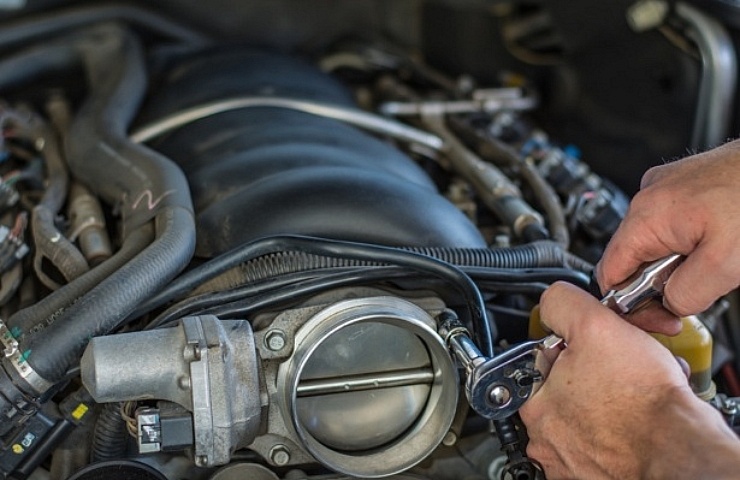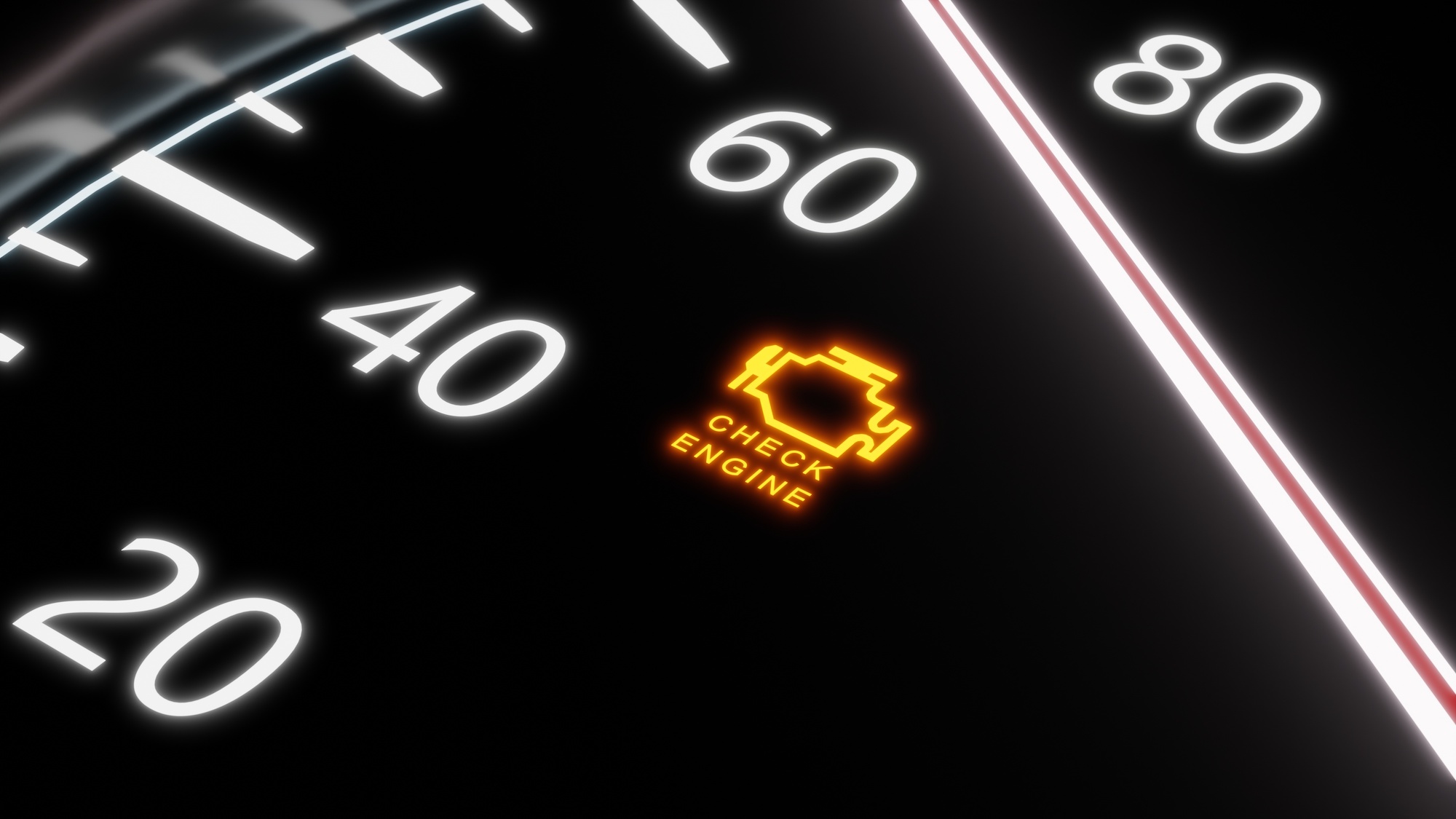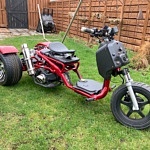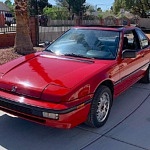Contents
How a Throttle Body Works
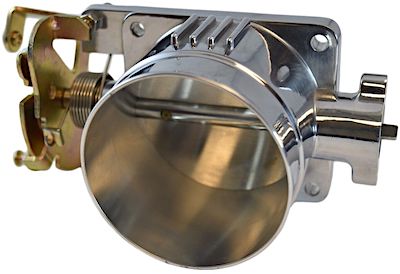
1996-2004 Ford Mustang GT aftermarket VMS 75MM throttle body
The throttle body is found between the intake manifold and the air cleaner. It uses a butterfly valve to control engine power by regulating how much air enters the system. It’s connected to the gas pedal through a cable or wire, so as the gas pedal is depressed, the throttle shaft moves.
Most modern cars have one large throttle body, though some V-6, V-8, and V-12 engines contain a throttle body for every cylinder bank or one per cylinder. Some also have a throttle body with two smaller butterfly valves instead of one.
How a Throttle Position Sensor Works
The throttle position sensor communicates the throttle position to the engine control module (ECM). The ECM factors in other information, such as engine speed and airflow temperature, to determine the proper air-fuel ratio and make adjustments as needed.
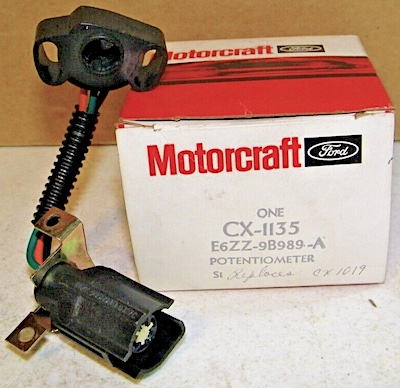
OEM 1986-93 Ford Mustang potentiometer TPS
There are two types of throttle position sensors:
- Potentiometer-type – This system contains a variable resistor connected to the throttle shaft. When the throttle is open, resistance changes, and the voltage signal is sent to the ECM.
- Hall-effect type – This system uses a magnetic field to determine the throttle position. A small magnet connected to the throttle shaft passes over the sensor during rotation. This action creates a voltage signal that is sent to the ECM.
When the driver pushes down on the accelerator, the butterfly valve within the throttle body turns to allow air into the manifold. The TPS, usually mounted on the throttle body, reports the position of the throttle plate to the ECM.
At the same time, the airflow sensor detects the increased flow and tells the computer to add more fuel to the mixture. This balance of air and fuel is necessary for the engine to run correctly.
Bad Throttle Body and TPS Symptoms
Whether it’s the throttle body or the throttle position sensor causing problems, you’ll likely notice some of the same issues.
Check Engine Light
While this indicator light can mean a host of things, it’s more likely related to the TPS or throttle body when seen with the other symptoms listed below. With a compatible code scanner, you can read the diagnostic trouble codes set by the computer to determine what might be wrong.
Shop now for throttle position sensorsLack of Power
When the system malfunctions, the TPS may never transmit the message to the ECM. This leads to excess air without the right amount of fuel.
When the engine can’t get enough fuel, the car won’t accelerate as it should. It could also start to accelerate but die out after hitting first or second gear. Either way, it means that the engine is being starved of fuel.
Rough Idle
There must be a steady flow of air and fuel to maintain a stable, smooth idle. The car won’t keep this balance when the TPS fails to send accurate signals. The engine will be starved of fuel, leading to a rough idle or, in extreme cases, stalling.
How to Fix the Throttle Body
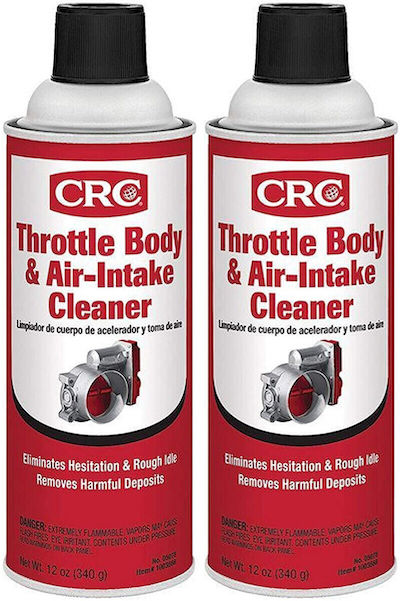
You may need to clean the throttle body to get it working again. Here are the basic steps:
- Remove the throttle body from the intake.
- Use throttle body cleaner and a small metal brush or cotton cloth to remove any residue.
- Remove all of the buildup from the throttle plate.
Be careful not to mess with the throttle position sensor or air flow sensor. These parts are very sensitive and can become contaminated easily.
Shop now for throttle bodiesIf cleaning doesn’t do the trick, you may need to replace the throttle body. This is an easy repair that doesn’t require special tools, and you can follow the guidelines in your service manual. In most cases, you simply need to remove the throttle body, which might also require removing the air intake and filter. Once it is off, you can bolt on the replacement and put everything back together.
How to Fix the Throttle Position Sensor
The instructions to replace the TPS are also reasonably straightforward. Here are the steps:
- Disconnect the battery. Remove the negative terminal cable to prevent electrical shock or damage to other components.
- Carefully unplug the bad TPS. There’s a wiring harness that connects it to the computer. Make sure you don’t break any connectors or clips.
- Remove the mounting screws.
- Remove the bad sensor.
- Clean the throttle body while the sensor is out.
- Mount the new sensor. Work in reverse, screwing the new sensor into the spot where you removed the old one.
- Connect the wiring harness and carefully plug the wiring harness into the new sensor.
- Reconnect the negative battery terminal.
While the TPS typically needs to be calibrated at this time to operate correctly, every manufacturer has different procedures. It’s best to get the instructions from your car’s service manual.
Repair Costs
If you plan to clean the throttle body, repair costs are minimal. You only need to purchase a bottle of throttle body cleaner. The rest of the cost is your time.
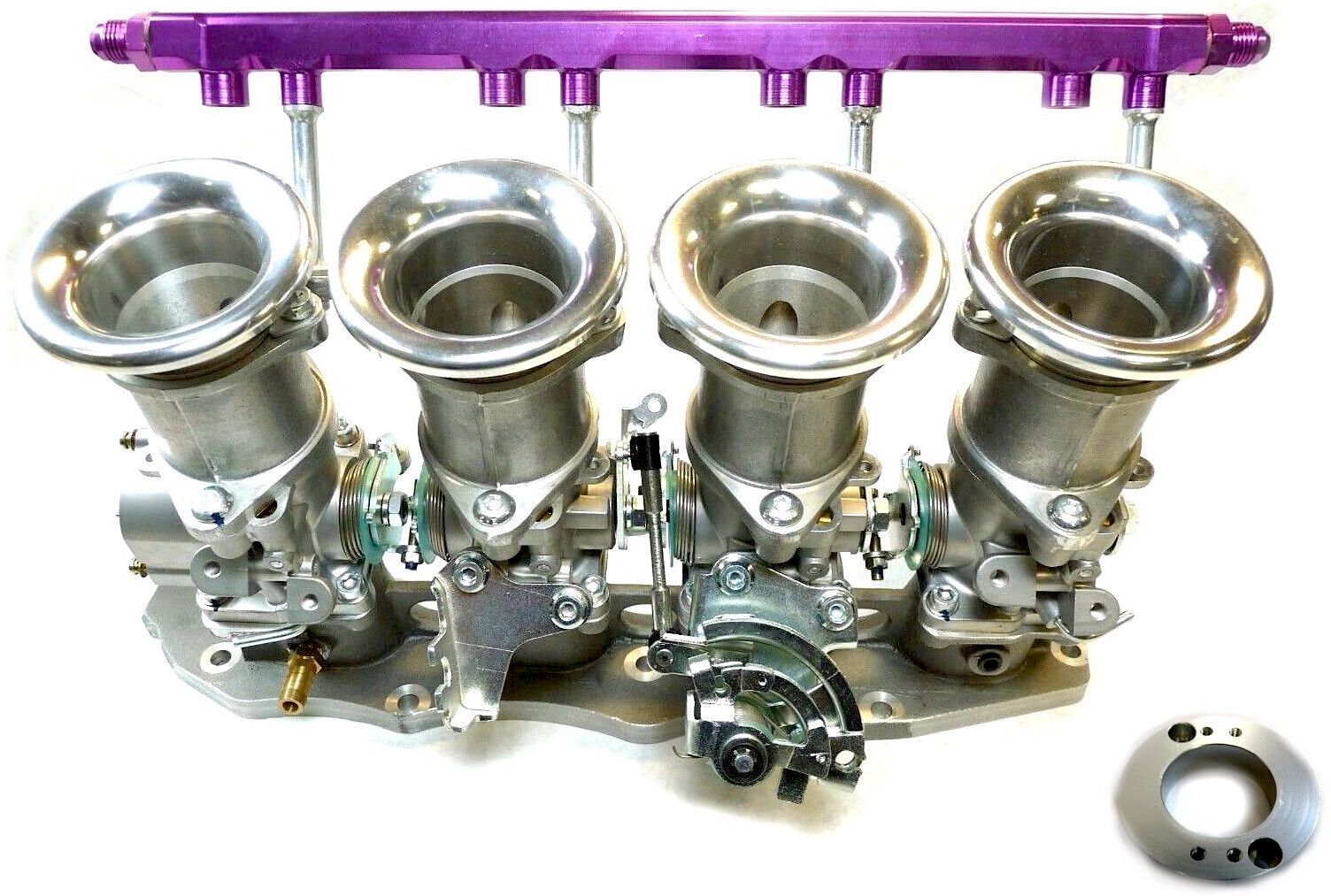
Aftermarket OBX individual throttle body (ITB) set – 1994-2001 Acura Integra GSR B18C1
If you need to replace the throttle body, you may spend between $350 and $550, depending on the make and model of your vehicle. If you don’t feel comfortable replacing it on your own, the labor may add another $75 to $150.
The TPS is usually cheaper than the throttle body. You may spend $95 to $210 to purchase a new TPS. On the other hand, if you need the help of a professional mechanic, expect to pay another $65 to $125 in labor charges.
Shop now for throttle bodies
